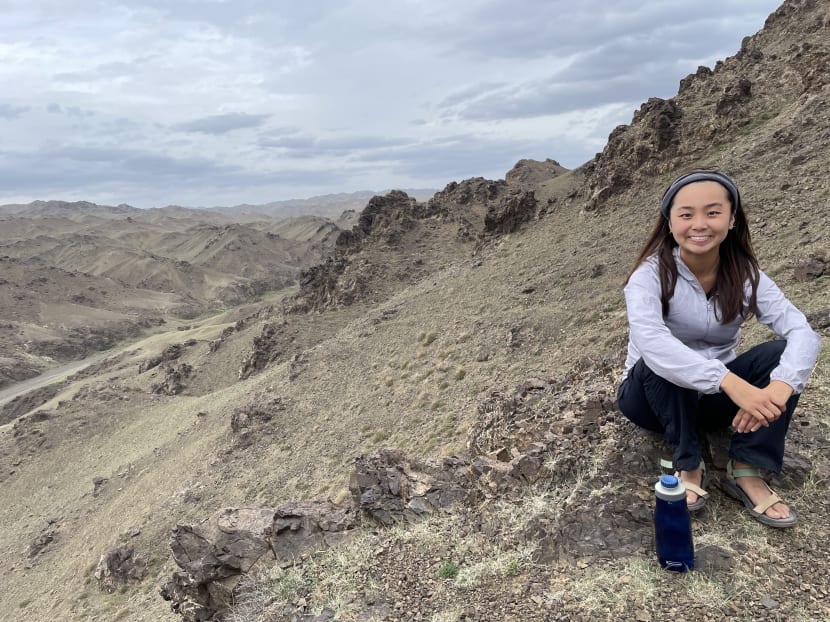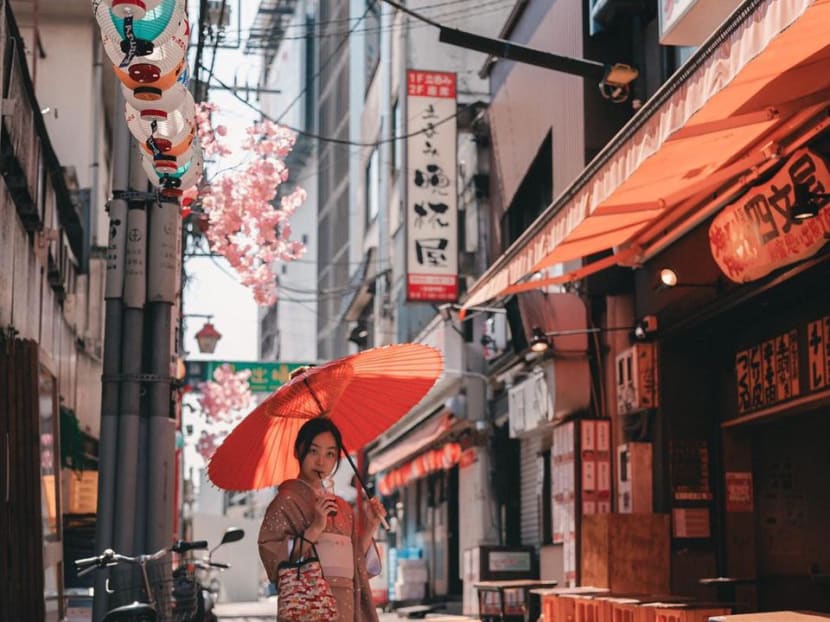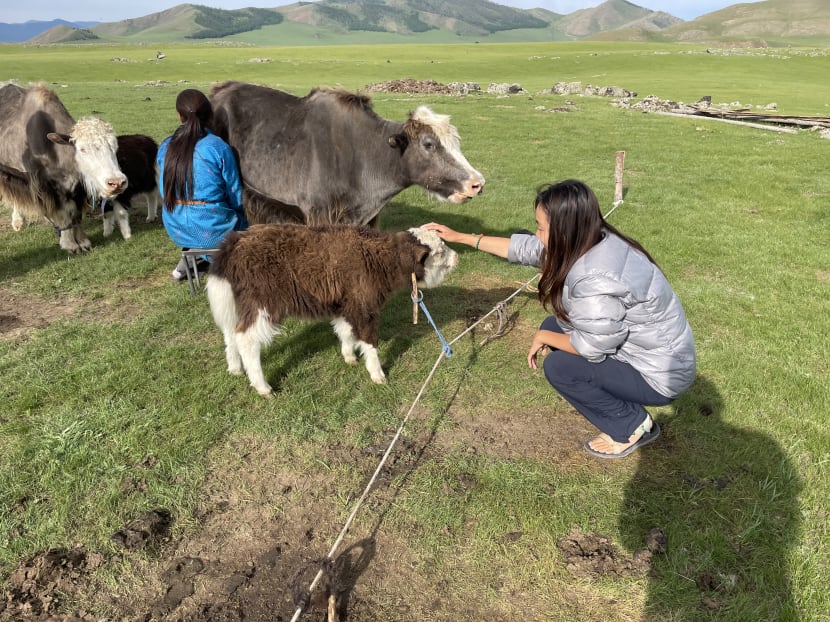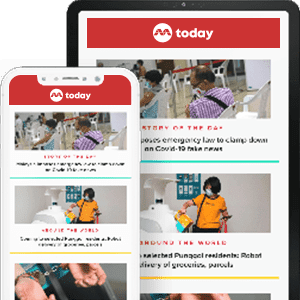Gen Z Speaks: Once confusing, my multicultural identity now teaches me to embrace different cultures when I travel

For 23-year-old Amelia Yamato Leow, solo travel is not about getting away, but about understanding herself better.
Every Jan 1 in the Yamato-Leow household, soft and chewy mochi will be placed on the dining table at home – part and parcel of my family’s tradition in welcoming the Japanese New Year, also known as Oshogatsu.
And typically about a month later, my household awakens to vibrant hues of red and gold as well as inverted “fu” calligraphy decorations adorning our walls, as the Chinese side of my family celebrates the Lunar New Year.
It is through these traditions and festivals that I am constantly reminded of how closely intertwined my Japanese and Chinese roots are.
But as I grew up, I am often asked which part of my heritage I identify with more.
I learnt as a young girl how complex the concept of identity is, growing up as a Singaporean-Japanese who has also lived for a time in the United States, China and Canada, before finally moving here 14 years ago.
Today, I understand that humans are not monolithic creatures and it is never about choosing one culture over the other.
Yet, as a kid, there were moments I felt confused as to who I was, especially when I lived in places where there were certain cultural expectations and stereotypes.
For example, while I was living in Singapore, the accent I picked up from living in the US and going to international schools in China led most people to assume that I wasn’t Singaporean. Conversely, when I travelled to North America, I would get compliments like “Your English is really good!”. Naturally, as a child, I would get confused about what parts of me I was meant to identify with.
I’ve learnt that when it comes to being at peace with my dual heritage, it's not about looking at the differences between my Singaporean and Japanese backgrounds or the cultural environment I grew up in, but being able to embrace how different cultures can have amazing similarities.
Such as the case with the Japanese and Chinese New Years, which have similar practices such as the giving of hongbaos and or "otoshidama" ("lucky money" in Japanese) in red packets from elders to children.
I know that I didn't belong to only one world, but I had the privilege to dip my toes into both.

Because I was brought up to appreciate the rich diversity of peoples and cultures around the world, I would bring that spirit with me during my travels, constantly going off the beaten track to learn more about how other people live.
Instead of attractions that occupy the usual tourist itineraries and sit on Top 10 lists, I found myself gravitating towards places that represent the diverse heartbeat of the city or town that I was in.
I loved the suburban Vietnamese restaurants in the US, the park playgrounds near family friends’ houses, the (super-sized) bags of snacks in grocery stores, and the various watering holes where serendipitous encounters and varied conversations happen.
I also sought out unique experiences as a solo traveller, recently visiting Spain, Japan and Vietnam on my own.
SOLO TRAVELLING IN MONGOLIA
As a young adult, solo travel was never about getting away, but about understanding myself better, to push boundaries and face fears head-on. Each trip is an introspection and an opportunity to grow.
To help travellers discover and understand the cultural significance of attractions, I worked together with a team of fellow travel and tech enthusiasts to develop Wunderguide, an artificial intelligence tour guide that helps save hours of sifting through reviews, websites, and maps across multiple apps.
It was this yearning to immerse oneself into the pulse of every destination that we decided to create Wunderguide not just as another travel tool, but as a bridge to help travellers easily find answers to their questions and understand their destinations.
Nevertheless, the best experiences are often spontaneous, as I’ve found. Last July, I found myself travelling to the vast steppes of Mongolia.
There, I would discover a wordless form of human connection while staying in a traditional ger, the yurt-like dwelling that has housed nomads for centuries.
Every communication with my nomadic hosts involved a tentative dance of gestures and smiles. In spite of this language hurdle, we were able to understand each other.
What made the difference was the mutual desire on both sides to share aspects of our own culture, which was a kind of universal language of its own.

That mutual connection was how I was able to try my hand at the age-old practice of shearing a sheep with a pair of scissors.
While I was clumsy in my first few attempts, my hosts responded to my earnest desire to learn their ways, and instructed me kindly as if they were teaching their own daughter how to survive in the wild plains.
Apart from the occasional laughter from the hosts when I made a mistake, there was mostly just a lot of silent gesturing. But I could sense that they shared my happiness when I finally learned the ropes.
Admittedly, all I had to offer in return was some of my snacks and coffee from my previous trip to South Korea, but they later returned the favour by inviting me to share with them a traditional meal of khorkhog, a type of stone-grilled meat.
To me, it felt like I was learning meaningfully and being accepted by another culture other than my own. Beyond the boundaries of being Singaporean or Japanese, I felt like someone more.
WHAT I’VE LEARNT
My visit to the Mongolian countryside has since become a core memory. As a 23-year-old who is now back amidst the familiar hum of urban life, I have been reflecting on my experience in the ger, trying to integrate what I learnt into my daily life.
I’ve come to the realisation that travel is not about the miles covered, but the memories made and the life lessons picked up along the way.
For one, I've made an effort to be more patient, taking the time to connect with those around me even if the first step is the hardest.
I’ve also tried to temper my urge to seek out instant gratification and be more mindful, remembering the peaceful solitude and the timeless nature of the grassy plains of Mongolia.
I will also not forget the importance of observing and listening as opposed to filling silence with chatter, because sometimes silence can speak volumes.

For my fellow female solo travellers, there will of course be some trepidation being so far away from home on our own.
Apart from the oft-cited and correct advice of doing proper research beforehand about cultural norms and keeping trusted ones informed about your movements, there are also ways for female travellers to not let fear hinder genuine experiences.
For one, opting for homestays can be wise, as staying with local family hosts provides an intimate glimpse into the region's lifestyle and traditions.
Connecting with other travellers also helps – platforms like Hostelworld can help you meet other travellers. For many cities, there are Facebook groups that cater specifically to female travellers.
It goes without saying that safety is paramount, which is why having a friendly face in the vicinity is key.
Whether it is the vibrant canals of Amsterdam, the bucolic Mongolian countryside, hectic Hong Kong or the tranquil streets of San Sebastian, I firmly believe that solo travel doesn't mean travelling alone.
Rather, it means interacting more with locals who can come from vastly different backgrounds. Doing so can enrich our own life and help us figure out our own place in the world.
After all, identity isn't a static entity sealed within predefined societal boxes decided from birth.
I may be Japanese and Chinese, but my identity is also the sum of all the places I've lived in and travelled to, like a patchwork of experiences and memories that define me as a person.
And each step I take into a new place or a new experience enlarges this rich tapestry by weaving in new threads, including those made from Mongolian wool.
ABOUT THE AUTHOR:
Amelia Yamato Leow, 23, is a Business Analytics major with a love for travel, nature, and culinary adventures. Her weekends are often a blend of family gatherings, hangouts with friends, playing with her dog, working on Wunderguide, and reading a new book. Her book recommendation is Sweet Bean Paste by Durian Sukegawa, which offers the poignant reflection: “All experience adds up to a life lived as only you could. I feel sure the day will come when you can say: this is my life.”









